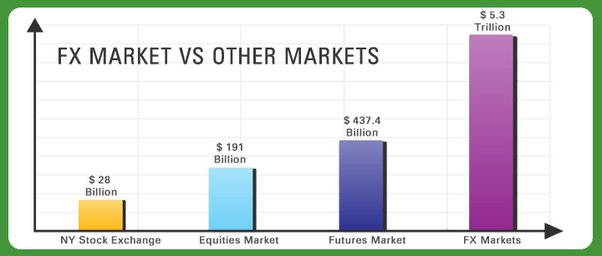Seafood is food from marine species such as fish and shellfish, including mollusks and algae. It also includes caviar, the eggs of sturgeon that are often salted and sold in jars as a delicacy.

Eating seafood can be a good way to get protein and important nutrients like omega-3 fatty acids (EPA and DHA), zinc, selenium, and vitamin B12. However, seafood may also contain bacteria that cause illness in humans. Treat yourself to a feast at Our Palafox.
Salmon is a beloved seafood that’s easy to prepare and delivers an ocean of health benefits. It’s high in omega-3 fat, which helps to reduce blood pressure and lower the risk of heart disease, as well as protein and vitamin D, which promote bone health and prevent cognitive decline with aging. It also contains the antioxidant astaxanthin, which gives it its pink color and is known to reduce inflammation throughout the body.
In addition, salmon is a good source of the B vitamins (B3, B5, B6, B7, and B12). The B vitamins work co-dependently to turn consumed food into energy and help to reduce oxidative stress. In particular, salmon is rich in vitamin B3 and vitamin B6, which both support healthy cholesterol levels.
A 3-ounce serving of salmon provides 2.6 mcg of vitamin B12, or 117% of the recommended daily value. This essential nutrient supports nerve function, red blood cell formation and making DNA. Salmon is also a good source of potassium and selenium, which play key roles in blood pressure regulation and cellular protection against oxidative damage.
Wild salmon spend two to three years in their natal river, growing to full size and then navigating back to their birthplace to spawn. This is a difficult journey that involves crossing over almost impassable waterfalls and sometimes traveling more than 1,000 miles to reach their place of origin. Scientists are able to track salmon’s life cycle through a combination of tracking devices, tagging, DNA analysis and stable isotopes.
The majority of the salmon we eat comes from fish farms, or aquaculture. While these facilities are often state-of-the-art, they’re not without their issues. For example, waste can build up around and underneath salmon cages, leading to infections and parasites. Additionally, sea lice, which start their lives as tiny slug-like larvae, can latch onto salmon and feed off their blood, skin and mucus.
Herring
Herring (Clupea harengus) is an oily, salty forage fish. It is widely eaten in Europe, particularly in Scandinavia and Germany. In addition to being tasty, herring is a rich source of protein, vitamin D, and omega-3 fatty acids, which are important for heart health and brain function. Herring is also an excellent source of selenium, which helps protect against cancer and promotes healthy skin.
The herring season begins in the spring and runs through fall, with different stocks spawning at different times and places. Greenland herring spawn in just 0-5 metres (0-16 feet) of water, while North Sea (bank) herrings deposit their eggs deep down on the ocean floor. The herring fishery is managed by an Interstate Fishery Management Plan that includes measures that close areas to herring fishing during spawning periods. Vessels may harvest herring under a limited access permit or open access permit program.
As well as a food for humans, herring is an important prey item and forage fish for higher trophic levels in the marine ecosystem. Herring consume a wide variety of pelagic prey items, including copepods, arrow worms, diatoms, tintinnids, smaller fishes, mysids, krill, and centropagids. They are also an important source of energy for higher-trophic level species, such as tunas and sardines.
A herring’s meat is creamy coloured and has a high oil content. It is usually salted, which preserves it without refrigeration and adds a distinctive flavour, and it can be eaten as a snack or main dish. Herring is also an important source of protein and vitamins D and B12.
Herrings are harvested by purse seiners, a large seine net that encircles a school of herring. These vessels are also used to catch groundfish, such as cod and haddock, and can incidentally take marine mammals.
Herring can be cooked in a variety of ways, including being smoked, baked, broiled, or fried. Popular appetizers include herring rollmops, which are slices of pickled herring wrapped around a gherkin or pickled onion. Herring can also be rolled in a pancake or served with fresh dill in a sauce, a traditional Scandinavian dish called herring in dill sauce.
Sardines
Sardines are small fish, and as such, they contain a lot of nutrients in just a little package. They’re a great source of omega-3 fats, which help to reduce the risk of heart disease and brain-related problems. They also provide a healthy dose of calcium, vitamin D, and protein. This makes them an important part of any health-conscious diet.
They’re part of the Clupeidae family, which also includes herring and anchovies. They’re usually canned, though they can also be smoked or eaten fresh. Canned sardines have a long shelf life and can be found in the seafood aisle alongside tuna, anchovies, and salmon.
Like most oily fish, sardines are a good source of omega-3 fatty acids, which are crucial for heart health and brain function. They’re especially rich in EPA and DHA, which are the forms of omega-3 that can be easily absorbed by your body. Eating sardines and other oily fish two to three times a week will help you meet the recommended dietary intake of omega-3 fats.
One of the best things about sardines is their low sodium content. While sodium is important for maintaining proper fluid balance and preventing high blood pressure, too much can be harmful to your heart, kidneys, and bones. Sardines are a good source of calcium, which helps to strengthen your bones and teeth and maintain the health of your nervous system.
They’re also a good source of protein, which is essential for building and maintaining muscle. It’s also necessary for creating antibodies that fight illness and promote strong immune systems. Sardines are a great option for anyone who wants to boost their protein intake without eating red meat or dairy.
If you’re looking for a nutritious and delicious way to start your day, try adding sardines to avocado toast. The combination of the salty, savory fish and creamy avocado will leave you feeling satisfied and energized all morning. You can also add a squeeze of lemon to make the flavor pop even more. For the perfect sardine experience, choose a can from Season that’s certified wild-caught using nets that minimize bycatch and disturbance of the ocean floor.
Seaweed
Seaweed is a common ingredient in Asian cuisine and also a popular food in the form of sushi. It is a rich source of vitamins A, C, and E, calcium, magnesium, iron, potassium, iodine, protein, and zinc. Moreover, it contains numerous phytochemicals and other bioactive compounds which have potential health benefits.
The human body cannot make some of the essential amino acids that are found in seaweed and as such, it is necessary to include these foods in our diets. The fatty acids in seaweed are known as “good fats” because they are known to lower cholesterol levels. In addition, they are also thought to prevent cardiovascular disease and regulate blood pressure.
Research is still early on the health-promoting properties of these compounds, but evidence suggests they may help with weight control, for example by inhibiting lipase – an enzyme that helps digest fats – and by increasing satiety. Another possible benefit is that the sugars in seaweed act as prebiotics, which support the growth of good bacteria in the digestive tract.
A wide variety of seaweed species are edible and have many uses in the food industry, particularly in East Asia. Some, such as kelp or wakame, are a staple part of the Japanese diet and are used to add umami to soups, miso sauce, and other dishes. Other seaweeds, such as kombu or shiso, are commonly eaten in sushi.
The structures of seaweeds vary widely, but most are composed of three distinctly recognizable parts: a holdfast, a stipe, and blade-like leaves. The stipe provides the attachment point to the substrate and the blades provide photosynthesis.
Seaweed is a source of important food ingredients, such as the gelatinous hydrocolloids agar, carrageenan, and alginate. These have been used for decades as thickening, emulsifying, and stabilizing agents in the food industry. The food-grade quality of these ingredients means that they are safe to eat, although they should not be consumed by people with thyroid disorders, since they may interfere with the absorption of iodine.

